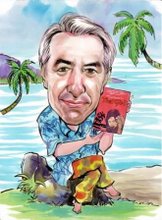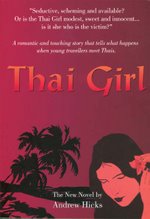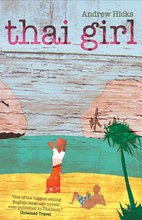

Above, Khao Phra Viharn. Below Prasat Hin Prang Ku.

Below, Prasat Hin Sikoraphum, Surin Province.



Apsara at the Khmer temple, Sikoraphum, Surin.
[New photos posted in an internet cafe as my Tot IP Star internet connection at home is too slow to do so.]
I can’t stop thinking about the crazy fuss over the temple of Khao Phra Viharn, (Preah Vihear in Khmer,) the Khmer style temple on top of the cliff in Cambodia just over the Si Saket border. It’s so sad that the parlous state of domestic politics in both countries has caused relations between Thailand and Cambodia to deteriorate so badly. The temple has become a political football and the focus of an entirely avoidable dispute.
The tension began over Cambodia’s successful application to have the temple listed as a World Heritage Site, something that’s in the interests of both countries, particularly Thailand which is the principal point of access for tourists. The issues are complex but suffice it to say that with troops massed on each side of the border, it only needed one hot headed soldier for fighting to break out. Now all cross-border trade between the two countries is badly affected and it may take years before the temple is again open for access from Thailand.
The current disaster perhaps highlights a much more positive point that is easily missed. Until now the degree of cooperation by the two countries over management of the temple has been little short of exemplary and could easily be continued. Thailand was mature enough to accept the decision of the International Court of Justice that the temple was within Cambodia and to realize that its best interest lay in working with and not against Cambodia.
Agreements were then reached by which visitors from Thailand were allowed across the border into Cambodia to see the temple without any passport formalities whatsoever. For all practical purposes the border became invisible.
Once sitting in the small pagoda on the Moh E Daeng cliff, an area now in dispute and claimed by both countries, I found myself talking to a monk who was speaking French. Otherwise there’s nothing to suggest that this is where the colonial power long ago asserted its territorial ambitions against the Thais.
In the temple you always pay the entry fee in Thai baht and the little Cambodian girls who wander the ancient ruins selling postcards were to be seen eating fried chicken in the stalls on the Thai side. It was a wonderfully relaxed atmosphere, in strong contrast to the aggressive territoriality forced on the region with the invention of the modern nation state.
The Thais now of course would say the decision of the Court that put the temple in Cambodia was wrong, but they now have to live with it.
Certainly it was not a very practicable decision. Perched at the top of the scarp just below the watershed, geographically it is within the Thai land mass and of necessity was always approached from that side because of the high cliff to its south cutting it off from the Cambodian plains. Politically it must therefore have been a part of the Korat plateau, whether ruled from Angkhor or not.
Practicality was not the issue that the Court had to decide though. It was not for the Court to decide which country the temple should most conveniently belong but to which country it belonged in law. Its role was to interpret the effect of the border treaties loosely concluded between French colonial Indo-China and the then sovereign powers of Siam.
Unequal treaties they may have been but the late colonial carve up of the world during that era created many greater anomalies and no court can put the clock back. To do so would be to overthrow the current international legal order throughout the world.
There is a possible argument that the temple is rightly within Cambodia as it is a temple in the Khmer style, but this is an argument without any merit whatsoever. The Khmer empire and its influence spread across a huge part of what is now Thailand. There are Khmer temples in large numbers on the Thai side of the modern international border.
Little is known about the precise nature of the political organization of this empire, only that it spread northwards from Ankhor breaking through the physical barrier of the Dongrak mountains at the low pass of Chong Jom, the present border crossing near where I now renew my annual visa. The road with its seven stations or rest houses, several of which are still discernible, then continued onwards to the major Khmer temple at Phimai. This temple along with Khao Phnom Rong in Buriram province indicate that Khmer culture flourished extensively in what is now Thailand and that it is just as likely from a cultural point of view that the disputed temple is on the Thai side as in Cambodia.
Near to where Cat and I live at Sangkha in Surin province there are many small Khmer temples that still have substantial structures standing. Given that nearly a thousand years have passed since the construction of the earliest at Phum Pon just south of Sangha, these were major monuments and a tribute to a remarkable civilization. What constantly surprises me is how those societies that create the greatest civilizations then often disintegrate into the poorest and most desolate of all.
I’m now digressing wildly, but think of China, India, Egypt, Central America. Even West Africa with the splendours of Timbuktu and the empires of Songhai, Bornu and Benin. All of these great societies had infinitely far to fall and the decline of the glory that once was Cambodia is no exception.
A few months back I decided to try and find one of the last local Khmer temples that I have not yet visited. With Anthony, a fellow enthusiast for ancient stone, we set off from Sangkha to look for Prang Ku, a small temple about forty kilometers away. It shouldn’t have been difficult to find but it was.
Simple navigation can be a formidable challenge in Thailand as road maps are breathtaking for their inaccuracy. The roads shown are historical only and the words ‘Prasat Hin Prang Ku’ were spread across perhaps fifteen kilometres of the map without being pin pointed, even if printed roughly in the right place. We therefore had to scout a wide swathe of terrain to find the temple.
Added to this was the problem of language and the fact that no self-respecting Thai would go a hundred yards out of their way to look at an old heap of stones. Accordingly the locals had little idea where it was.
We were probably within a mile of the temple for at least half an hour repeatedly asking for directions, but they all pointed confidently in different directions. When we finally got there, the temple precinct was nicely maintained by the authorities at some expense and was well worth the visit. That expenditure probably provided a good few jobs, though actually putting up some direction signs or getting anyone to go and look at the ruins would perhaps be expecting too much.
We then went on to look at the temple at Sikoraphum, a much larger complex that I’ve been to many times before that is well preserved and has some nice carved lintels and figures. Surrounded by a moat and shaded with massive trees, it is a beautiful spot. The site is well managed and clean and there’s a small charge for entry, though it is much less appealing than a Seven Eleven store or a dealership for Honda motorcycles, the local temples to consumerism.
American convenience stores and Japanese motorbikes are part of a shared modern culture that bind the world together in mutual interdependence, while Khmer temples are part of an ancient culture shared between Cambodia, Thailand and Laos. It thus doesn’t much matter on whose side of the border the temple of Khao Phra Viharn is thought to fall. Whoever’s it is, the peoples on both sides of this artificial divide are equally entitled to benefit from it. They should demand that their governments again cooperate in the open border policy that served them so well and for so long.
Listing as a World Heritage Site is a huge opportunity for all, especially for Thailand which should see considerable commercial benefit for the poor region on its side of the border. It could be a continuing example of how two nations can work together for their mutual benefit.
Sadly people throughout the world are now looking on, aghast that local domestic politics could so unnecessarily foment an international incident of such seriousness. But then most wars and confrontations are the consequence of weak internal leadership, of self-serving politicians playing to the electoral gallery. What will they think of next when they think we’re all bored with the ‘War on Terror’?
It’s not hard too to see a link too between the Khao Phra Viharn fracas and past turmoil in world politics. That this region became a key theatre for the ‘War on Communism’ is one of the key factors that destabilized Cambodia for so very long and set neighbour against neighbour.
From the West we can look down with dismay at the current dispute but the countries of South East Asia are not solely to blame for the tensions that still divide them.





























